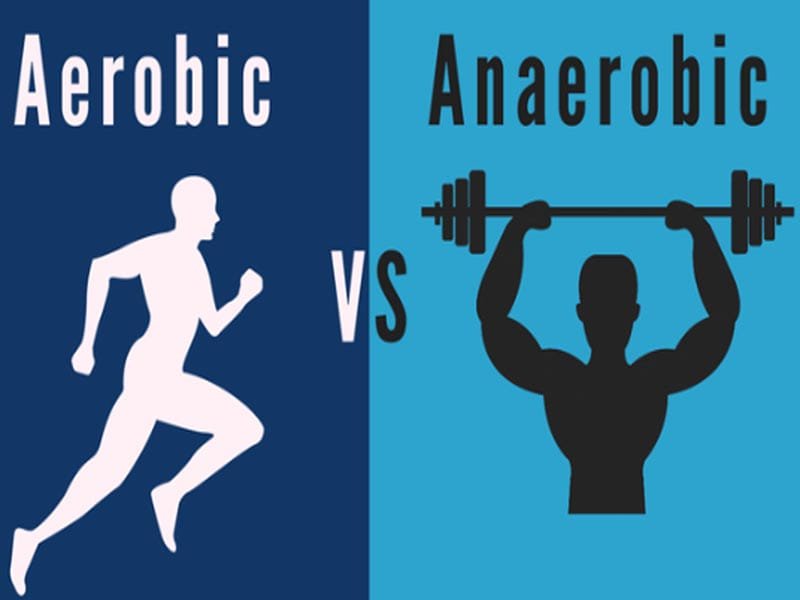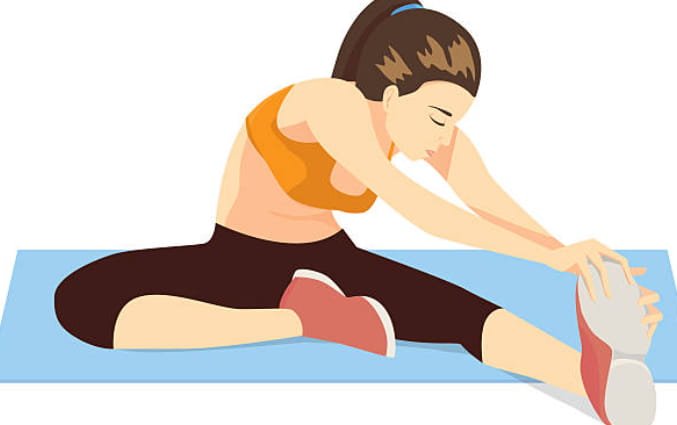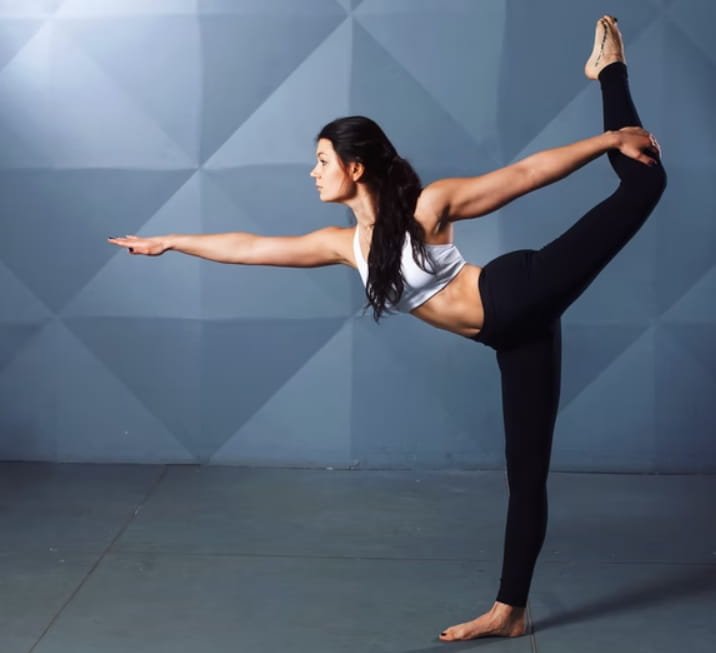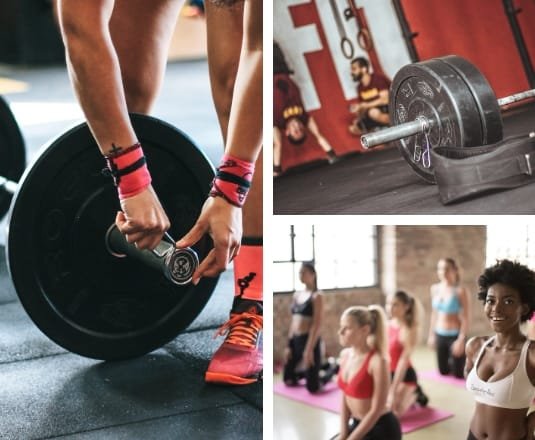
by admin | Jun 4, 2022 | Fitness
How To Become A Life Coach
Life coaching has become a frequently pursued career, as it offers a variety of benefits and is impactful for people, if done the right way. Certainly, when we put pseudo-life coaching aside, having the right people in those positions is crucial to the optimal functioning of the community. The reason here is that as knowledgeable as you are, a third-person perspective is always useful, especially in the personal and professional aspects of life.
By becoming a professional life coach, you can even help people identify and chase visions and goals and even, turn their life around. If all of this resonates with you, keep reading as we give you information on how to take on that career path (if you’re serious about it).
What Does “Life-Coaching” Mean?
At first, the term “life-coaching” may seem ridiculous, because of the ever-changing and dynamic environment we all live in. And though that stands true, the job of a life coach is to help their clients identify aspects of their life that need to be worked on. That is to say that life coaches do not really tell you how to live, but rather how to navigate through the dynamic life you’re exposed to.
Characteristics Of A Life Coach

To further elaborate, a life coach is generally a well-trained individual who understands psychology deeply and helps their clients fulfill their full potential and reach goals. On top of that, a professional life coach will be able to advise and encourage their clients on a variety of professional, personal and career matters.
Regardless of your current level of development (even if you’re a life coach), hiring a coach yourself is never a bad idea. As a matter of fact, if you are unsure about whether or not you should become a life coach, hiring one to help you reach certain goals is an even better idea.
In doing so, you will technically have a mentor that will help you along your journey of becoming a professional life coach.
How Much Does Life-Coaching Education Cost?
Without a doubt, before starting to practice life coaching, you must get the proper certification. There are a variety of options for life coaching certification courses, each of which offers a different methodology and is priced differently. A typical certificate course would last anywhere from 20 to 100 hours and cost between 1000 and 10,000 dollars.
The good thing is that you can take incremental steps on this journey, as there are basic, intermediate and advanced courses. In taking those one by one, you will be able to build from the ground up, instead of taking all the information all at once.
How Much Money Can You Make?
Whether we’re talking about a dream career path or a new endeavor you are trying to pursue, one thing is for sure – The money you make is a direct reflection of the value you give out. There are life coaching positions in certain companies, but your best bet would be to try and create your own image, persona and community.
THIS is how you can get out of the fixed paycheck and grow your income exponentially. Think of it this way – Generally, a life coach can get anywhere from $70 to $300 per hour. If you get to the point where you are on the higher points of that range, you can easily break $10k per month. And that is just 1:1 coaching! When you advance and create a name for yourself, you will have a community that knows about you and has trust. To be of even greater value to them, you can then push out other products, such as e-books, video courses, membership areas, etc.
Conclusion
The task of a life coach is to motivate and guide people towards working on lacking areas in their life and character, with the ultimate purpose of achieving goals and realizing ideas. In the end of the day, if you’re someone who communicates well, this may as well be one of the more suitable career paths you can follow!

by admin | Jun 4, 2022 | Fitness
Anaerobic VS Aerobic Training – Which One Is Better?
When it comes to training, whether it is professional sports or general training, there are two main types of activity one can do. Those two types are namely “anaerobic” and “aerobic” training, each of which provides a different stimulus for the body and thus, a different end result. In this article, you’re going to learn more about these two types, which one is better for specific goals, and how to combine them. So without further ado, let’s get to it!
Anaerobic & Aerobic Processes
Though these two terms may sound a bit complex, their meaning is quite simple The word “Anaerobic” comes from the following Greek words:
- An – Meaning “without”
- Aer – Meaning “air”
- Bios – Meaning “life”
In simple words, all anaerobic processes in the body do not require oxygen to run. Oppositely, all aerobic processes in the body DO require oxygen to function.
Examples Of Anaerobic Activities

Anaerobic training activities are basically any type of training which requires you to do a short, power-burst bout. Here are some examples of anaerobic training activities:
- Sprinting
- Weightlifting
- Climbing
- Broad jumping
Because of the nature of anaerobic activities (short, power-burst movements), this type of training mainly develops muscle strength, size, strength endurance and explosiveness.
Examples Of Aerobic Activities

Contrary to anaerobic activities, we have aerobic activities, which are basically any low-intensity exercises that are long in duration. Here are examples of aerobic activities:
- Jogging
- Skipping rope
- Swimming
- Cycling
Unlike anaerobic activities, aerobic training mainly develops the cardiovascular & respiratory systems (heart & lungs). With this type of training, your body becomes more efficient at releasing energy with the help of oxygen.
Which Type Of Training Is Better?
As we already established, anaerobic training will stimulate the development of your musculature and its main properties – Strength, strength endurance & explosiveness. On the other hand, with aerobic training you will improve the work of your heart and lungs.
And so, the answer to the question “which type of training is better?” is quite simple… It depends on the context!
Are you someone who wants to look better? Focus your training around anaerobic activities and throw in some aerobic activities here and there. Or, if you’re someone who just looks to improve their endurance in the long run, focus on aerobic activities that are low in intensity and long in duration.
Ultimately, if you’re not a professional athlete, you would be best off combining both types of training and tipping the scales in favor of the one that matches your goals the most.
Conclusion
Though most people just LOVE to compare different types of training and dub some “better than others”, one thing remains true… That is namely the fact that the body is a complex machine, capable of a MULTITUDE of movements. The more movements you do and the more you engage in different types of activities, the more you develop the systems and components (muscles) that make those activities possible.
Therefore, this approach will lead to a functionally and visually better physique. What is YOUR approach to training? Comment down below!

by admin | Jun 4, 2022 | Fitness, Health
An Hour A Day For A Better Life!
Nowadays, most people see training, nutrition and other self-care activities as something time-consuming. But what are the things you can do on the day to day basis, without using up most of your wake time? Well, the truth is there are MANY small things you can do on the daily basis to improve your overall quality of life.
In this article, we’ll give you our best tips and activities and it is up to you to schedule them into a convenient, one-hour routine, every single day! If you do that consistently, that’ll be nearly 400 hours of work on yourself for a year.
Guess that will give results. Now without further ado, let’s get to it!
What Can You Do For Your Body?

You have to realize that establishing certain habits that will nourish your body is not all that hard. Especially when you compare that to the vast amount of things you are NOT doing. Seriously, think about it – All your bodily functions and processes are autonomous (automatic).
- You don’t have to think in order to digest
- You don’t have to consciously poop (it just happens to you, but you can hold it)
- You don’t control any of your bodily functions for the most part
It appears that the community of cells that your body is, is just a smart organism that’s trying to keep you alive and healthy. Here’s what you need to do in order to support the life of your community of cells.
Be active/Include training
Optimal health occurs when all your bodily systems are working normally and with balanced chemistry. Following that train of thought, we can say that you can’t just ignore one of the biggest systems in the body – the musculo-skeletal system. As complex as it is, the human body was MADE to move, which is why a stagnant, sedentary lifestyle may increase the risk of worsened quality of life.
And though most people think of the gym when they hear “training”, lifting weights is by far not the only activity you can and should do. Do some weight lifting, do some bodyweight work, some hikes, climbing, swimming, running, sprinting, etc. Enjoy the vast variety of activities your body can do and it will thank you!
Eat nourishing foods

Though the body synthesizes many of the nutrients it needs on its own, there are certain essential nutrients that the body needs, but can’t produce. This is why eating the proper foods in the right amounts, is essential when it comes to giving the body what it needs. Protein and fats are the two essential nutrients that play major roles in many important bodily functions.
Carbohydrates on the other hand are not essential, but can be a good tool to use when trying to optimize high-intensity training performance. Here are our best whole food picks for you to include in your nutrition plan:
- Beef
- Eggs
- Fish
- Avocado
- Mangoes
- Dairy products
- Sweet potatoes
- Honey
If you are an omnivore, animal products should be at the core of your diet, as they provide plenty of essential proteins, fats and are very satiating, making it less likely for you to overeat.
Manage stress
Even though nutrition and movement are of prime importance for your wellbeing, stress can be the make or break factor, due to its nature. Excessive stress shuts down the body’s growth, as well as the immune system and also, kicks the heart and brain out of coherence (sync). This inner-created chaos then translates to feelings, emotions and actions in the outer world, making your overall experience bad.
Without a doubt, stress management may sound easy, but it is not the easiest thing to practice. Take 10-20 minutes of your day to sit down in a quiet room, undisturbed and reflect back on your day. Analyze which stress factors were persistent and put a conscious intention to react in a different way to those things.
Remember, stress management is about an inner regulation of your reactions to things.
Conclusion
For the most part, your body works automatically and all you have to do Is use it the right way and feed it with the right food, fluids, thoughts and awareness! From then on, all the right mindsets, actions and emotions will come into place and set a life flow of greater quality. Are you ready to make the change?

by admin | Jun 4, 2022 | Fitness
Habits Of Fit People
It’s not a surprise that people who go to the gym tend to be in better shape than those who don’t. And without a doubt, the reason why they are healthier and fit resides within their habitual life! But what are the specific habits of people who make fitness a priority? This is exactly what we’re discussing in today’s article! Keep reading and steal some of these habits from the fittest people around!
#1 Waking up Early

Most people who are into fitness have one common goal: waking up early. This is because they understand that waking up early is one of the key habits of fit people. When you wake up early, you have more time to work out, eat a healthy breakfast, and get on with your day. Waking up early also allows you to avoid the temptation to skip breakfast or hit the snooze button. Because let’s be real, one of the most common excuses to not take care of your body is “I don’t have time.” And if you wake up early, you’re just opening yourself time windows to do what you have to do!
#2 Exercising

Exercising is one of the key habits that fit people have. So you see, it’s not some magical thing that they do that gets them in shape. Having a fit body is simply the side effect of being a functional human being! And frankly, it’s not about going all-out in the gym every day. It’s simply a matter of doing small steps, regularly. So you see, getting in shape isn’t difficult. It just requires some effort and dedication. Lift some weights. Do some hiking. Do some bodyweight exercises and yoga! Explore all the ways in which your body can move!
#3 Meal Prepping

Meal prepping is a great way to make sure you have healthy, home-cooked meals without having to spend hours in the kitchen. By preparing your food ahead of time, you can save both money and time. You’ll also have control over the ingredients and portion sizes of your meals. And also, needless to say, you will be able to relax and unwind with a relaxing kitchen session! So you see, this is just another core habit of fit people, to help them save time and take care of their bodies!
#4 Non-Exercise Activity
One of the other considerations is that fit people are generally more active in their daily lives. They are also more likely to have a better self-image, which allows them to be more productive and focused on their goals. When you’re healthy and fit, it shows in your attitude and the way you carry yourself. This, in turn, encourages you to stay active and maintain a healthy lifestyle. While most people view activity and exercise as a chore, it really is just a fundamental thing for fit people!
#5 Stress Management

Last but not least, fit people are really good at stress management! What does that have to do with being fit, you may ask? Well, it’s quite simple – As you have probably figured by now, getting and staying in shape requires a lot of effort. And frankly, unmanaged stress makes it twice as hard to stick to a routine that requires effort.
If you ask any fit person what’s at the core of their routine, you’d hear about things like conscious thought management and meditation!
Final Thoughts
So what do all of these fit people have in common? Besides the obvious things, like working out and eating healthy, they have formed some good habits. And as we all know, it’s easier to stick to something when it becomes a habit. So if you want to be one of those fit people (or just get healthier), start forming some good habits today.Now tell us, how are you planning to become one of the fittest people around? Let us know in the comments below!

by admin | Jun 3, 2022 | Fitness
Building A Garage Gym – What Equipment To Choose?
If you’re like most people, the idea of a home gym conjures up images of huge piles of equipment, all taking up space in your already cramped basement or garage. The reality is that you don’t need a lot of equipment to get in a great workout at home – and you certainly don’t need anything as big and bulky as a treadmill or an elliptical machine.
In fact, all you really need to get started is your body weight, but we all know that we get adapted to it quite quickly, which is exactly when the need for weights comes in. So with that in mind, let’s take a look at what you might want to consider adding to your home gym arsenal once you’re ready to make your garage a fully-functioning gym.
#1 A Squat Rack

When it comes to building a gym in a fairly small place, you HAVE TO be efficient and pick out the most effective pieces of equipment. Squat racks are some of the most versatile pieces of gym equipment because they can be used for a variety of exercises.
For example, you can use a squat rack to do:
- Squats
- Lunges
- Calf raises
- Bench presses
- Overhead presses
- Biceps curls (usually forbidden in a public gym)
- Rack pulls
Last but not least, if you read part 1 of this article series, we talked that a big disadvantage of a home gym is the lack of a spotter. And well, with squat racks and their safety pins, that is no longer a problem!
#2 A Dumbbell Rack

It is true, the squat rack provides us with the opportunity to put all that raw power to work with the help of a barbell. However, when it comes to developing a functionally and visually symmetrical physique, you just can’t go without uni-lateral work. THIS is where a dumbbell rack comes into play to give each side of your body a nice workout, separately.
While a squat rack will allow you to do all your basic, compound movements, a dumbbell rack can help with that AND some auxiliary exercises, such as:
- Shoulder presses
- Lateral raises
- Triceps extensions
- Dumbbell rows
- Goblet squats
- Dumbbell lunges
- Biceps curls, all kinds of biceps curls!
If not a whole dumbbell rack, you can opt for a set of adjustable dumbbells that will do the work just fine!
#3 Dip & Pull Bars

For the most part, people think that at the beginning of your ‘training career’, you should start with bodyweight exercises and then move on to weights. And well, that couldn’t be further from the truth, because even when you adapt to your own bodyweight, these exercises are still bomb.
This is especially valid when you consider adding some extra weights to those movements! If what we just said resonates with you, consider getting a dip & pull-up bar to your home gym. This is the equipment that will allow you to do different kinds of bodyweight exercises, including, but not limited to:
- Chest/triceps dips
- Wide grip pull-ups
- Chin-ups
- Neutral pull-ups
- Leg raises
- Knee raises
- Active/passive hangs
- Muscle-ups
- More complex bodyweight exercises
#4 A Cable Machine

Now, though free weights must be at the core of your workouts if your goal is to get stronger and more fit, that doesn’t mean you should ignore cables.
In fact, we all know how good of a pump cable machines can bring about. With this in mind, it is fair to say that a cable machine should be considered once you get all the other essentials sorted! A cable machine will allow you to do more concentrated work on exercises, such as:
- Triceps press downs
- Cable curls
- Cable pullovers
Final Thoughts
Knowing what equipment to use for your garage gym is important, but having the right attitude and mindset will make or break you. A home fitness workout should be about more than just getting a good sweat on. It’s also about testing yourself physically, mentally, and emotionally – all of which are necessary components if you want to live an active life and improve your body and mind.
The most important thing you can do when building your own space at home is to choose gear that fits your lifestyle goals to feel like a part of who YOU are. So go ahead, get on the market and find YOUR perfect pieces of equipment to set up your personal training temple!

by admin | Jun 1, 2022 | Fitness
Does Your Weight Really Matter? | What The Scale WON’T Show You
The weight scale is perhaps one of the most common tools which people use to monitor & judge their fitness progress. However, more often than not, it is something that can actually leave you frustrated and totally kill your motivation. The scale is in fact the single most powerful mood-shifter!
And though your weight is one of the important variables to track, whether you are losing or gaining weight, it does not really give you an idea of the bigger picture. This is exactly why it should not be the primary merit of progress, whatever your goal is. In this article, we are going to explain the other, important things you should keep track of and how to actually use the scale so you can make it a functional part of your plan.
Now let’s get to it!
Does Your Weight Matter?

Now, surely, the scale has its applications on your way to a healthier body, which is why we are not telling you to completely give up on using it. Even more so, your weight is a very important variable when it comes to calculating your daily calories, macronutrient needs, or even the intake of certain supplements, which are based on the individual’s weight.
And though that stands true, we will say it again – The number on the scale MUST NOT be your ONLY merit of progress. There are many other things that you should keep track of, while also utilizing the scale to the best extent possible, without letting it crush your mood.
The Scale & What It Does NOT Show
Okay, think about it – Can one single number really show you everything there is to know about your fitness? Is this number everything you really need to determine whether or not you are fit enough? Well it may be, but ONLY if you are an athlete who’s looking to get into their weight division come competition day. For the general population, weight should only represent a small percentage of the things we judge progress on.
It is a fact that the scale cannot show you things such as:
- Your body composition (Lean body mass to fat ratio)
- How you look in the mirror (duh)
- Water retention (some days you are heavier but that’s not because you gained fat)
- Athletic performance (strength, endurance, etc.)
All of the above are far more important metrics of progress and if you only rely on the number that the scale shows, you are in for some massive disappointments.
HOWEVER, if you weigh yourself correctly and relate the change in weight to other parameters, such as the ones from above, you will have a much more realistic idea of your progress.
How To Use The Scale (The Right Way)

If you want to make your weight scale a viable tool on your fitness journey, rather than something that will shake your beliefs and motivation, PLEASE use these tips below:
- Monitor your TRUE weight
Whenever you get a weight in, make sure it is IN THE MORNING, before eating, after going to the toilet and with just underwear. THIS is your true weight! If you weigh yourself on the same day, at the same time, before eating anything and after going to the bathroom, you will get the most accurate reading possible.
Otherwise, you risk weighing the food you took in, the water you drank, the fluids you retained, etc.
- Adjust Nutrition Based On Weight & Goals
For the goal of sustainable weight loss and maintenance of lean body mass (lbm), you have to lose no more than 1-2 lbs a week. If your true reading shows a loss greater than 2 lbs for the week, don’t be afraid to bump up the calories slightly. If on the other hand, the reading shows an insignificant loss of weight, decrease calories slightly.
Oppositely, if you are trying to gain weight, aim for no more than 0.5-1 lbs a week. This will allow you to avoid any unnecessary fat gains and thus, take less time to shred down afterward.
- Don’t just set a “weight goal”
If you narrow everything down to the number on the scale… You’re in for disappointments. Whenever you get a reading on the scale, whatever it is, set goals for your strength, endurance, visual look, mood, energy, etc, etc. This will help keep you motivated and also, will give you a different perspective on the bigger picture.
Important Takeaways
Though your weight is an important variable when determining progress, setting up & adjusting a diet, it is NOT the only thing you should narrow your progress down to. The scale does not show more important things like body composition, strength levels, mood, and more importantly, how you actually look.
Ultimately, your best bet is to monitor your progress on all variables possible, to ultimately determine whether your work is paying off well or your plan needs adjustments.
Page 5 of 14« First«...34567...10...»Last »



























